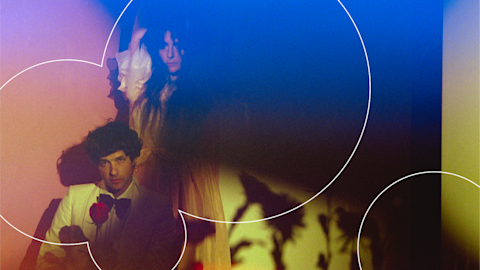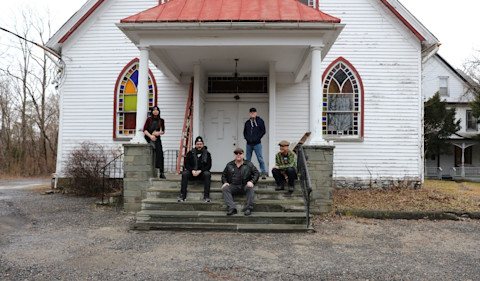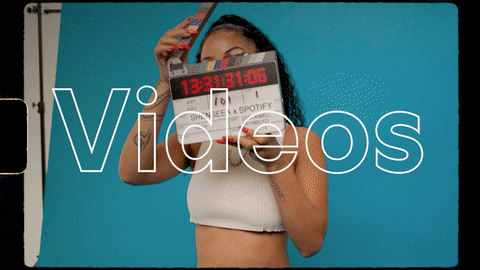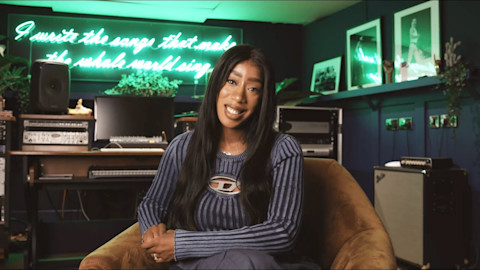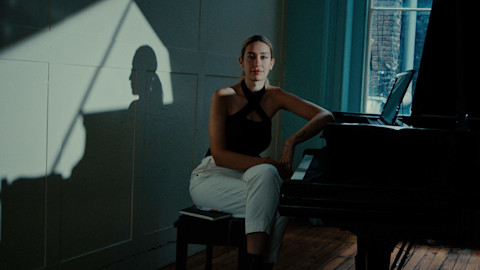Just like recording in the studio, playing live shows has a vocab that’s specific to its needs. From the moment you look into booking a show to the workout you’ll get loading out of the venue, you’ll be navigating the language of promoters, bookers, talent buyers, sound techs, and—if you hit the big time (or just want to create the illusion of it)—roadies. Here’s a breakdown of the terms you should know, whether you’re hitting the road for a cross-country tour or just rippin’ on down to your local dive bar.
Backline: A backline usually refers to the non-instrumental sound-system equipment, like amps and speaker cabinets, that you need to play a gig. In many cases, depending on the gig and venue, it can also include instruments like drums (often minus the breakables) and keyboards. You’ll most often hear the term “backline” during logistics chats about a one-off festival date, where quick changes between acts are essential, so artists aren’t necessarily expected to have all their own gear with them. When that’s the case, the organizer should give you a rundown of what elements of the backline the venue will supply—gear brands, the size and power of amps, the number of pieces in the drum kit, and any other relevant details.
Billing: The bill is the list of acts playing a show, and there are different kinds of billing. Headline billing refers to the situation where one act (the “headliner”) is the main feature of a show and is the reason why most people have showed up; that band or artist will occupy the top slot of any advertising literature and is usually represented in larger type than the supporting acts. Equal billing puts everyone on the same level. And there’s festival billing, which happens when there’s a high volume of performances stretching over multiple days or at least multiple stages, with more than one headliner. Acts will be broken down into tiers, the way you see it on a Coachella poster, for example.
Breakables: Drummers on the same bill might share the bones of a kit, but they’ll rarely share the whole thing. Breakables are essentially the pricey or special parts of a drum kit—snare, cymbals, kick pedal, for example—that each drummer brings themselves. If you, as a drummer, are asked to bring only your breakables to a show, this is what they mean. Shells refers to the other components of the kit—toms, kick drum, stands—that are often provided by the headliner. This system not only helps keep turnover tight, but also saves your precious snare from abuse by a rogue heavy-hitter.
Buyer: Usually referred to as a talent buyer, this person negotiates on behalf of the venue or event to determine how much you’ll be paid, and works out any necessary contracts.
DI (Direct Input) Box: A DI box creates a balanced signal. An unbalanced output can pick up unwanted noise, ruining the sound, so if you have an instrument that emits an unbalanced output (usually a keyboard, synth, or guitar), you can plug it into a DI box, which balances the output. The DI box plugs into a mixing console, which sends a noiseless signal through the speakers.
Front of House: The front of house (or FOH) is the area where the soundboard and lighting controls are located. This is often a good distance from the stage, usually close to the center of the room, where technicians can see and hear everything from the perspective of the audience.
Guarantee: This is the amount of money that you are guaranteed to get paid for a gig, regardless of net income. A “guarantee-plus-percentage” deal offers the guarantee plus a percentage of sales from tickets or alcohol, for example.
Headliner: The top dogs on a bill. The headlining act is generally the big draw for a show, gets paid the most, plays the longest, and plays last.
Load-in/Load-out: Load in is when you haul all your stuff from the van or the bus into the venue and on stage. Load-out is the exact opposite, and was immortalized beautifully by Jackson Browne on his 1977 record Running on Empty.
Mains: The main speakers for the front-of-house sound system. These are the speakers that provide the sound for the audience at a show. This is usually not the sound system that you, as an artist, will hear most clearly while on stage (that would be the monitor system, described in more detail below).
Managers (Tour, Production, Stage): For a big touring production, many managers are needed. A tour manager is essentially the person responsible for keeping the show going, no matter what. Their responsibilities are nearly endless: they make sure that the artist gets where they need to go on time and is in good shape to be on stage, and they track down whatever is needed in whatever town the show stops in. A production manager makes sure the production—stage, sound, lights, performance, catering, etc.—is all set up at each show and ready to go, while also dealing with issues pertaining to equipment. They are involved with the production as long as the tour lasts. And a stage manager deals with all stage and backstage issues—things like checking backstage passes, supervising turnovers, and making technical adjustments as needed—at the specific venue and on the day the show happens, ensuring a hopefully seamless show.
Monitors: The stage monitor system is what provides the sound for you while you’re on stage. It’s important to note that what you hear through the monitors (the speakers that face you and the back of the stage) will not be the same mix that the audience is hearing through the mains (see above). The monitor system is there so you can hear only what you need to hear while you’re performing. The FOH staff will watch you for cues such as pointing to a mic or other band member and then pointing up or down, indicating that you need more or less of something in your monitor. There are also in-ear monitors.
Promoter: The person, company, or organization that is planning and spreading the word about an event. A promoter can be a single individual arranging and publicizing a one-off gig, or it can be a massive corporation (like Goldenvoice, for example) putting on a festival—or it can fall somewhere in between.
Radius Clause: A radius clause dictates a geographical area where you may not perform during a specified time frame surrounding an event. It’s used to make your appearance exclusive to that event so that interest isn’t diluted. For example, if you’re playing the Eaux Claires festival in early July, your contract may state that you can’t perform in the state of Wisconsin between April and October.
Rider: A rider is a part of your contract that stipulates what extras the promoter must provide. This is most often in the form of food and drink in the green room for before and after the show, but it can be expanded—depending on the situation—to include almost anything. There are countless stories about bands at the height of their popularity demanding bizarre things in their riders, including, perhaps most famously, Van Halen’s request for a bowl of M&Ms with all the brown ones removed at every gig. But remember: the rider comes out of your money at the end of the day. So if you’re ordering puppies backstage, make a note—you’ll be paying for them.
Roadie: This is a term usually reserved for an employee of a touring band who sets up and maintains equipment, but it can be used to describe pretty much any employee who tours with the band. They load in and load out, drive tour vehicles, ensure the security of instruments and artists, and keep the show on the road.
Set/setlist: Your set is an allotted amount of time to play on stage; a headlining set is typically much longer than the sets for support acts. A setlist is the list of songs you plan to play during your set. You don’t need to plan and share your setlist beforehand, but if you’re working with the same crew for a number of shows, it’s a great resource for your sound and lighting techs especially. You can make things up as you go, too. But having a setlist makes it easier to keep the band and production crew on the same wavelength.
Soundcheck: Ideally, a few hours or more before you hit the stage, you do a soundcheck. Soundcheck includes figuring out all the mix levels for the mains and monitors, so you get to indicate to the sound techs—or sometimes, more accurately, they might indicate to you—things such as how loud certain instruments should be or where a voice should be in the mix, and you work out any sound kinks so that your set sounds awesome. A line check is basically an expedited soundcheck, where you check levels quickly right at the beginning of your set and then the sound tech adjusts accordingly as you perform. (For instance, a line check is par for the course at festivals if you’re not a headliner.)
Stage plot: A stage plot is a visual representation of what your set-up looks like. It indicates where amps, drums, keys, microphones, DIs, and anything else you’ve got in your arsenal goes. It’s usually just a simple drawing of where things go on stage, most often a digital image file, and is provided to the venue’s stage manager so they know how to prepare for your set.
Strike: To strike something is to take it down and off the stage. That could mean an amp, an instrument, or the entire set-up for a band.
Support: The opening act or acts for the headliners. Support acts get shorter set times and are usually there to warm up the crowd for the main event.
Turnover: The time between sets that bands and techs have to shift the setup on stage from one band to the next. Turnovers are usually done as quickly as possible, and could entail striking one stage plot completely and replacing it with another, simply replacing everything but the backline, or even just leaving everything as is and having the bands share all gear. You want to avoid slowing down the turnover at all costs, as delays can eat into set times and create bad blood between acts.
—Matt Williams
